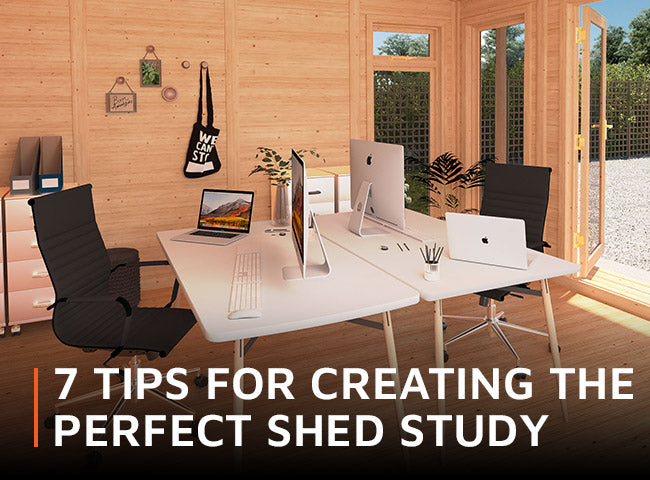A quiet, peaceful place to work is difficult to find in the hustle and bustle of family life. If you run your own business, work from home, or need a secluded place to study, an insulated garden room is the ideal solution. This space will not only make you more productive, recent reports show that a good work-life balance improves your health, wealth and happiness.
Moving your office out of your home and into your garden is easier than you might think. Insulated garden rooms from Waltons come with free installation, so all you need to do is lay the foundation and watch as your new garden room takes shape. Depending on where you live, you’re unlikely to need planning permission. A quick call to your local planning office will confirm this.
1. Define the use of your garden office
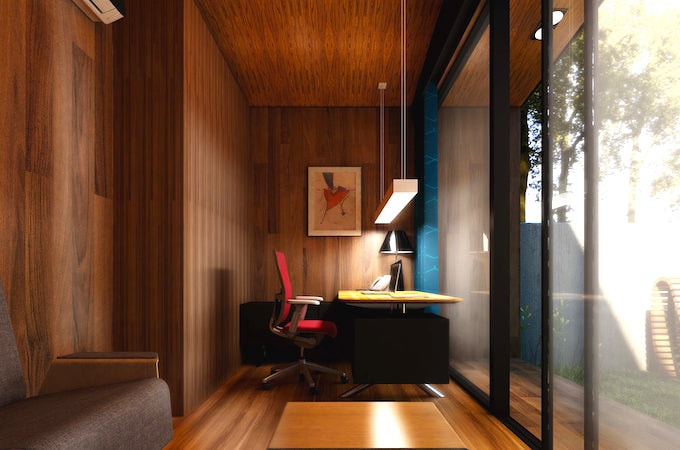
Image: Shutterstock
Insulated garden rooms come in a range of sizes and can be customised to suit your requirements. Choose an off-the-shelf model, or decide where to put the double-glazed doors and windows yourself. For a unique, bespoke finish, add more glazing or extra doors.
The model you choose will be determined by the type of work you do and the size of your garden. Decide how you want to use the room and make a list of all the equipment you’ll need such as a desk, drawing board, craft table, shelves, storage units and a printer.
Order the biggest garden room your budget allows. Once you’re connected to water, electricity and the internet, you might find that you spend more time there than you first imagined!
2. Connect your garden office to utilities
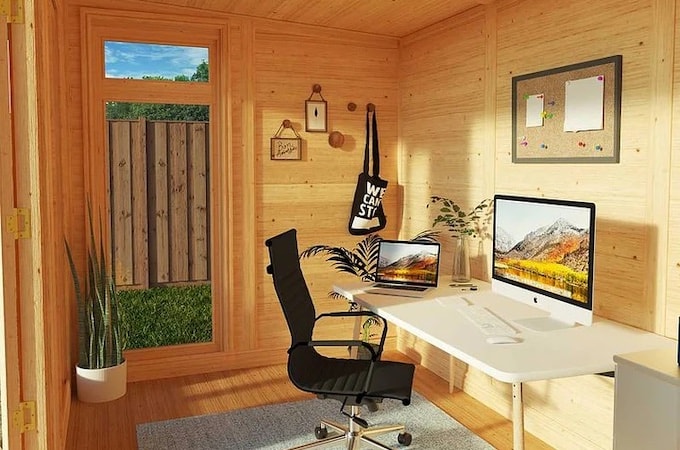
Image: Waltons 3m x 2m Insulated Garden Room
Bring your garden room to life by installing utilities. Have an electrician connect you to mains power so you can work safely without a tangle of extension cables. Make sure you have good indoor and outdoor lighting (consider solar as an alternative), and heating to make your new office comfortable all year round.
Insulated garden rooms are ideal for home offices – they’re double glazed and fully insulated - the walls, roof and floor are fitted with Eco Quilt to help retain heat during winter and reflect it in summer. On cool evenings and in the depths of winter you’ll want to heat your garden room. A small electric heater, oil radiator or even a log burner (installed by a professional) will make the room cosy and welcoming.
A reliable internet connection is a must for small businesses or home offices. There are several options to consider, like a point-to-point system or an ethernet cord running from your house. Just remember to bury it deep enough so your connection won’t be severed by accidental digging!
3. Personalise your garden office

Image source: Unknown Wong via Unsplash
Your home office needs to be practical and comfortable, but it’s also important to make it inspiring and attractive. Invest in some good quality furniture, or give upcycled items a unifying lick of fresh paint for a cohesive finish.
Decorate the interior walls - they can be simply painted, clad, wall-papered, or plastered for a smooth modern look. And remember the floor. Carpet gives a warm and luxurious feel, while wood floors, laminates or lino are hard-wearing and easy to clean.
Add wall art, plants and a few carefully chosen accessories to give your space some character - it should reflect your personality and be an uplifting environment. Make the room smell nice, fill a vase with flowers, play your favourite music and you’ll smile every time you cross the threshold.
One of the main benefits of a garden room is the ever-changing scenery framed by the floor-to-ceiling windows. Ditching your commute to enjoy the changing seasons in your own back garden is a real joy. Choose a desk and chair on casters so that you can enjoy different vantage points throughout the day.
4. Plan your office storage
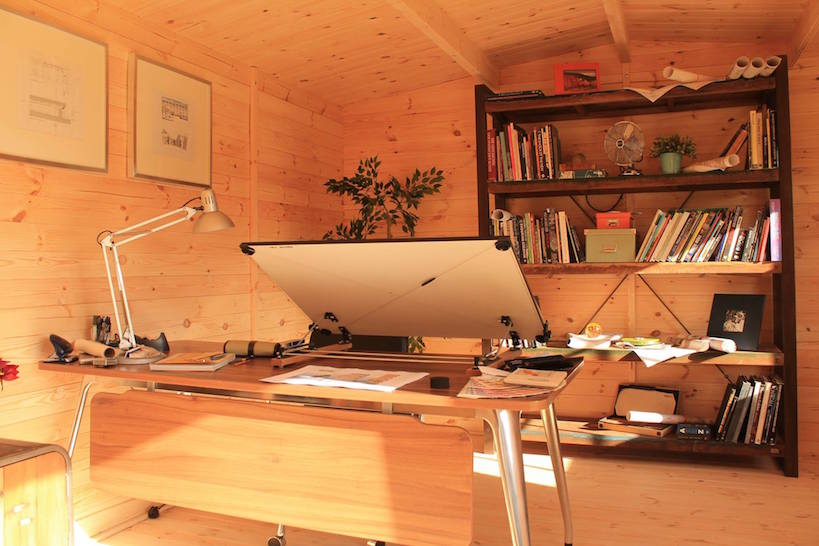
Image source: Waltons
There are two main types of storage, open – like shelves, and concealed – like cupboards. Things that you use regularly are best kept within easy reach on shelves or bookcases. But things that you don’t need very often can be stored out of sight, keeping your workplace clean, light and uncluttered.
Make best use of the vertical storage space in your garden room with floor-to-ceiling cupboards or bookcases, wall-hung shelves and pin boards. A tall open shelving unit can be used as a room divider and to create different “zones” for working and relaxing.
Whatever storage you choose, a few minutes spent tidying up before you leave will make your office a welcoming space to return to each morning.
5. Light up your work space
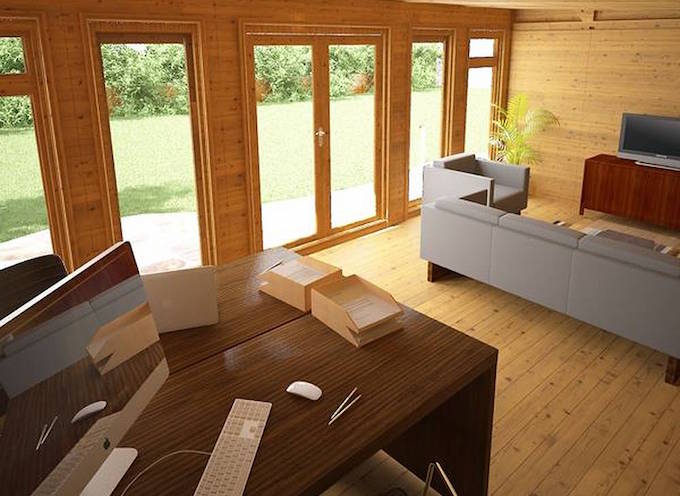
Image: Waltons 6 x 4m Insulated Garden Room
Studies have found that well-lit spaces with natural daylight and greenery can improve creativity and learning. Plan the location of your office to take full advantage of this. A south-facing position will provide maximum natural light throughout the day – but you can add extra windows or doors to the south-facing elevation of your office, even if the entire building can’t be situated that way. And unlike the usual corporate environment, there’s no need to push your desk against a wall or hedge it into a cubicle. Nab yourself a window seat and enjoy the view.
Good lighting is vital when you’re working late into the evening or during the darker winter months. This isn’t an area to cut corners - you’ll work more efficiently when you can see properly, and it will protect the health of your eyes. Adding lamps and layers of ambient lighting will make your office more inviting on bleak winter days. And remember to add personality with your lighting choice. There’s no rule that says office lighting needs to be boring – hang a chandelier if you feel like it.
6. Don't forget the creature comforts
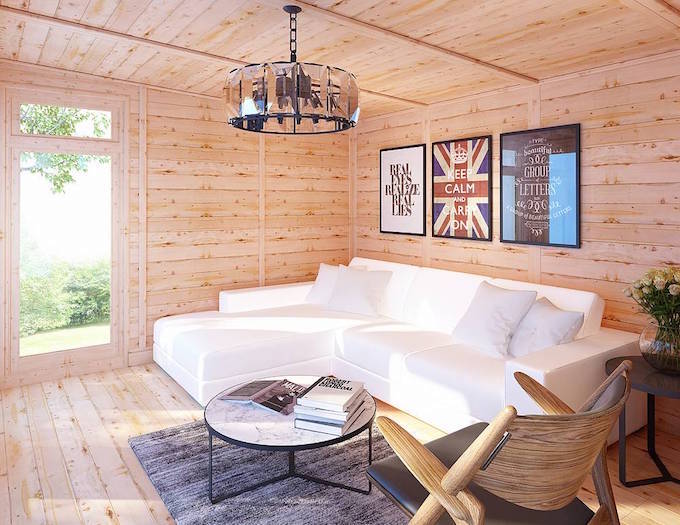
Image: Waltons 3 x 4m Insulated Garden Room
You might spend most of your day at a desk, drawing board or table, but a good home office will also include a comfy chair or sofa where you can put your feet up, enjoy a cup of coffee and take the time to rest and think. Add a cushion and a luxury throw and you could even enjoy a quick lunch time snooze!
Install a drinks station, coffee machine and mini fridge for snacks and drinks throughout the day. But do try to get out at lunch time – just because you’re comfortable doesn’t mean you won’t need breaks.
And speaking of fresh air, don’t underestimate the importance of ventilation. Even if you don’t want the doors propped open all the time, storm windows will prevent your space from feeling stuffy.
7. Landscape your garden office
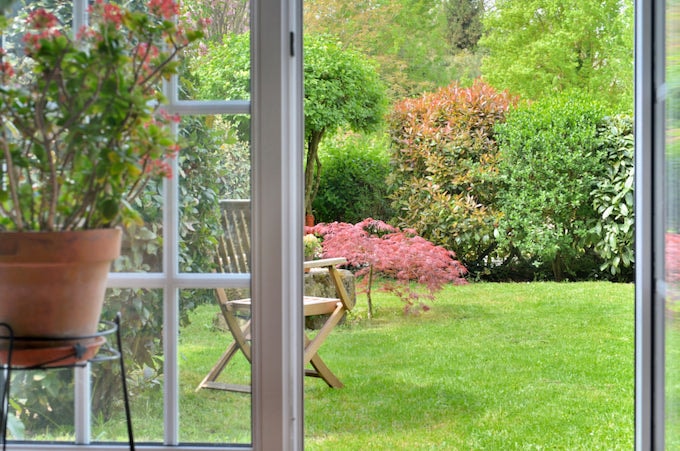
Image: Shutterstock
Decorate the exterior of your office to prolong its life and protect it from weather damage, but also to give it ‘kerb appeal’ as a focal feature in your garden. Paint the outside in black or charcoal to help it blend into the background, or choose brighter colours to make it stand out. For more ideas, read our article – landscaping tips from the experts.
Work on the garden surrounding your home office and make your outlook as attractive as possible. Lay a path to help you travel between the house and office in all weather, and install a solar security light to allow you to navigate safely in the dark. Your new home office should be a room to be proud of, inside and out.
Using an insulated garden room for your home office is an excellent way to reduce commute times and establish a better work-life balance. If you work from home or run a business from your garden room, let us know over on our Facebook Page - we’d love to see your photos!



